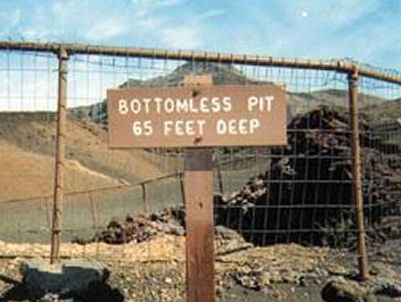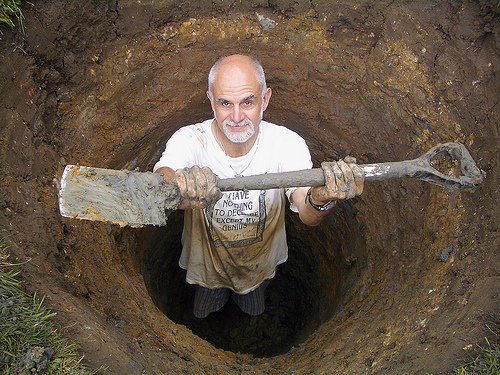“Where you used to be, there is a hole in the world, which I find myself constantly walking around in the daytime, and falling in at night.” -Edna St. Vincent Millay
It's the ultimate dream of many children with time on their hands and their first leisurely attempt at digging: to go clear through the Earth to the other side, creating a bottomless pit.
Most of us don't get very far in practice, but in theory, it should be possible to construct one, and consider what would happen to a very clever test subject who took all the proper precautions, and jumped right in.
What would you have to do to travel clear through the Earth, come out the other side, and make the return trip to right back where you started? Find out on the science of bottomless pits!
- Log in to post comments



And of course barring other "anomalies", such as the fact the planet isn't quire spherically symmetric (or even cylindrically symmetric), and we have tidal forces to contend with as well.
In any case I think the core is closer to 10,000F than 4000F. Even if we had a cold earth, I don't think we have any materials that would resist the pressure either.....
Now if we had a dark matter particle, that we could drop, and it truly had zero cross section for interaction other than gravity, our DM particle could make the journey without needing the pit!
@Omega Centauri #1: You're quite right about the core temperature (and it's why Fahrenheit temperatures shouldn't be used!) The inner core temperature is estimated (http://www.homepages.ucl.ac.uk/~ucfbdxa/pubblicazioni/epsl2002.pdf) at 5700 K, which corresponds to about 9,800 deg F.
If DM "truly [has] zero cross section", then I think you'd have a rather hard time having one to drop in the first place :-) What would you keep it in?
OK, this is a dup, Ethan.
Even if you're like "Yeah, I know, so?", it would have been good to link to the previous talk on this on SWAB so people can see what's been said before.
In the vacuum example, accelerating downward, why wouldn't the velocity keep increaing heading toward the center. Yes acceleration would decrease, but not velocity. Going past the center, velocity would decrease. Wouldn't it be zero when you get to the other side (at the same elevation).?
"from the North Pole to just shy of the South Pole"
But what if you jump from South Pole?
Not that radioactive, no more than ordinary rock. Yes, the Earth gets radioactive decay heating, but that's because there's a LOT of rock, and the heat takes a long time to percolate out.
what are they really hoping to find and achieve since we all know in general sense that the earth might appear round although its not?if all talke in practice wont this end in endagering the humans and animals?
I am not sure about the accuracy of the speed of the diver when he reaches the center of the earth in his vacuum pit. The 11km/s speed assumes constant acceleration of 9.81m/s. What would the speed be as G changes on the way down. As the diver approaches the center of the Earth, G will be substantially reduced as a great deal of the Earth's mass will be behind him. It looks like some calculus will be required here.
I thought about the same question once and would like to add another complication: What would the air do in the bottomless pit (the non-vacuum one)? As an approximately ideal gas at equilibrium temperature should follow an exponential pressure curve, doubling the pressure every 6km (18000ft or 4mi). Evidently after ten such doublings, in a depth of only 60km, you already have a pressure of 1000 atmospheres. And a further 60km down - only 2% the way towards the earth's center - you would have 1,000,000 atmospheres. Clearly, air will not behave as a gas at those pressures and room temperature. Instead, it will liquefy.
Why not do this on the moon, which has no atmosphere or active core?
@Alosh - For the vacuum, jumping from the South Pole would run you into the seal/ceiling at the North and end badly or break through and proceed back into the air for some distance/height. :^)
You wouldn't smash into a wall even if the shaft wasn't along the rotation axis.
Coriolis force would gradually press you against one wall and, provided the walls were frictionless, you'd keep right on going. The sidewards force world continue throughout the trip and you'd have the same lateral velocity as your surroundings by the time you reached the other end. This is the ONLY way both linear and angular momentum can be conserved.